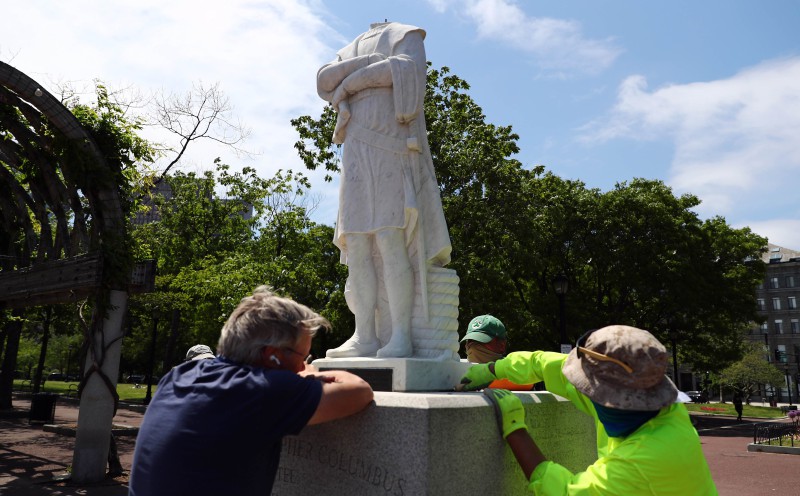https://youtu.be/UzoZxKmLOAI
We’re almost well into the third quarter of 2020 – have you made headway in any of this year’s financial priorities and goals? Or perhaps you have been thrown off guard by the state of affairs in by the Covid-19? In a challenging environment like now, it is even more crucial to sit down and do a critical review of your latest financial status.TIME flies by quickly when you’re going about your daily grind. We’re almost well into the third quarter of 2020 – have you made headway in any of this year’s financial priorities and goals?
Or perhaps you have been thrown off guard by the state of affairs in by the Covid-19? In a challenging environment like now, it is even more crucial to sit down and do a critical review of your latest financial status.
Loss of livelihood, pay cuts, unemployment, business closures, and a looming global recession – this is the trail of devastation left by a virus which has played havoc around the globe.
Interesting enough, if this health crisis is not enough to shake you into action to take charge of your finances, then what will?
According to the Oxford English dictionary, procrastination is defined as a postponement, “often with the sense of deferring though indecision, when early action would have been preferable, ” or as “defer[ing] action, especially without good reason.”
Throughout my experience as a licensed financial advisor, I have met many people who procrastinated over reviewing their financial status, let alone in growing their wealth. There are many reasons for this. Some lack the knowledge on where to begin, while others may cite the poor state of economy or our poor tax regime. However, the bigger reason usually lies in our tendency to procrastinate.
Procrastination is one of mankind’s biggest weaknesses – we have all procrastinated doing something important at some point. But in the world of finance, procrastination can result in an opportunity loss to mitigate risk and in growing wealth – sometimes an opportunity which can never be recovered. After all, it takes time for any investment to compound into a significant figure.

Yap ming HuiYap ming Hui
In this article, I’m going to highlight some of the common reasons people use to put off taking actions on their financial matters.
> “I don’t have enough time to plan and invest”
This is a common reason people often say, when putting off investing. In today’s economy, most households require both spouses to work full-time jobs in order to afford the lifestyle that they desire. In the office, you’re stressing about deadlines, projects to complete, and deadlines to meet.
At home you’re likely seeing to your family, social life, and chores, and any leftover time is probably spent away vacationing to rejuvenate so you can rinse and repeat. Add kids to the equation, and you’ll barely have any time left to breathe.
Who really has the time to spend to research, plan and invest? After all, you still have 20 years headstart till your retirement, you should be able to put it off for later, right?
Wrong. Pushing things for later is comfortable, as you convince yourself that it will get done eventually. However, as most of us know by now, later is a concept that is never ending. There is always a “later” to convince yourself about. Before you know it, too much time would have passed and you’ll have too little time to play catch up to achieve the financial goals you could have well achieved if you started earlier.
What you need to do: Set a date and time and clear your schedule. If being at home is too much of a distraction with the family present, then find a place where you can be isolated to focus on your financial planning. Alternatively, outsource these efforts to an independent financial advisor who can review your financial status and manage the wealth for you.
> “I don’t have enough money to plan and invest”
Most people don’t realise it, but having enough money is a matter of perspective. If you don’t have enough money to invest when you’re earning RM5,000 a month, do you think you will have enough to invest when you’re earning RM50,000 a month? Believe it or not, I have met several people earning around RM50,000 or more per month and still lament about not having enough to save and invest.
We always think along the lines of “if only we make more money”, but once we actually start making more money, our expenses and lifestyle will also go up a notch.
The famous Parkinson’s Law coined by C. Northcote Parkinson in his book The Law and The Profits illustrates this concept best. The law says that work expands to fill the time that is allocated to complete it. In other words, if given a 24-hour deadline, a 20-minute job will take a day to complete.
He goes on to say that individual expenditure does not only rise to meet income but it tends to surpass it, and probably always will. So, if you’re waiting for a time when you feel you have enough money to save and invest, that time will never come.
What you need to do: Take a long hard look at your expenses. This is critical since we are now in challenging economic times. Mindfully track your spending habits for a month and cut back on luxuries that you can live without. If it helps, set up a standing instruction with your bank to automatically transfer a portion of your salary into another bank account. Use that to start investing. Every small portion helps, so don’t think that cutting back on a small luxury is insignificant.
> “I don’t really need to invest”
People won’t admit to thinking this, but they do. This fallacy of not needing to invest stems from the fact that when they retire someday, they will have their EPF savings to rely on. Technically, if you are earning a comfortable amount and do not make any EPF withdrawals before you retire, you may be right in thinking this.
However, this is hardly the case. EPF has reported that more than two-thirds (68%) of EPF members aged 54 had less than RM50,000 in EPF savings, while only 18% of its members had the minimum savings target of RM240,000 in their account by 55. This amounts to a monthly withdrawal of RM1,000 to cover basic needs for 20 years – sufficient if you want to live a basic retirement lifestyle, but nowhere near what is needed for a comfortable retirement in a middle-class lifestyle.
So if you’re thinking of relying mainly on your EPF savings, think again. Your EPF should act as an additional retirement fund on top of your other retirement savings, instead of being the only pillar in your retirement plan.
What you need to do: Start planning now for additional retirement savings. Before you invest, determine the lifestyle that you want to live when you’re retired and calculate how much you’d roughly need over the span of your retirement. Don’t know where to start?
Use a holistic financial planning app, like iWealth, to do a comprehensive calculation on your retirement and other major financial goals. Remember to factor in inflation.
While half of the year has flown by just like that, it’s never too late to examine your financial health and take the necessary steps to protect and grow your wealth.
Over the years I’ve shared many articles to inspire middle class folk like yourselves to take control of your financial destiny.
I certainly hope this knowledge has proven useful and relevant to your personal circumstances.
However, I also hope that you have begun putting into place some of these practices. Today, you may have gotten a better idea of what has been stopping you from investing properly.
Procrastination is a very human trait – but if you’re able to identify what’s been holding you back and take the necessary measures to monitor yourself and counter this, you’ll already have the upper hand on your future.
Remember, true power comes from knowledge. But knowledge without action, is useless.
During good times, there may not be an urgency to act. But we have now arrived at an unprecedented juncture where there will be a cost or consequence to our inaction. If this is not the time to take the bull by the horns, then when?
By Yap Ming Hui
The views expressed here are the writer’s own.
Related posts:
Embrace multi-asset investments in volatile market
Investors will need to undertake dynamic multi-asset allocation for managing their investment portfolio in the current low interest rate environment.
Go for multi-asset investments in tough times
Investors will need to undertake dynamic multi-asset allocation for managing their investment portfolio in the current low interest rate environment.
























